

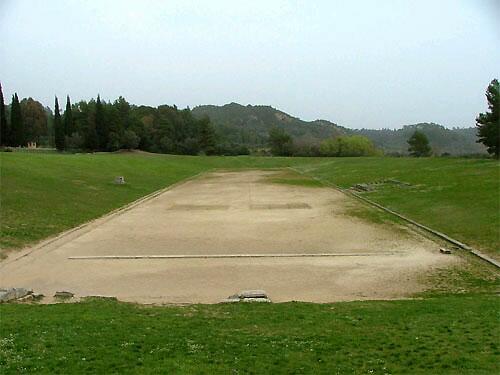
Between 1958 and 1961 the German School of
Archeology discovered the competition track in Ancient Olympia
and reshaped the embankments in their original form.
The stadium track is 212.54m long and 28.50m wide.
A length of 192.28m separates the stone boundaries that mark the
starting and finishing lines.
According to myth, Hercules measured out 600 times the length
of his foot to give this track its specific length.
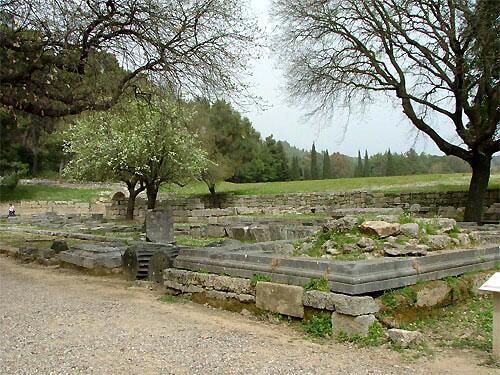
This building, of the Ionic order, and its
exterior colonnade, with Doric capitals, were built under Philip
II after the battle of Chaeronea.
The building is located in the eastern corner of the sacred precinct,
the Altis, and hosted
the competiitons in shawm-playing and oratory.
The Echo Colonnade was officially called the Stoa Poikile, or Painted Colonnade, from the paintings that used to be on its walls,
but it was popularly called the Echo Colonnade because inside
it an echo repeated a word seven times.
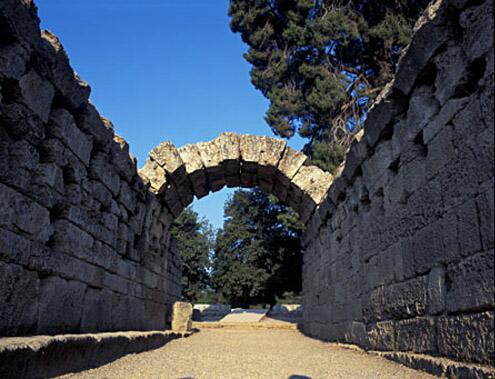
A narrow, vaulted, roofed passage, opening
on its western side onto a pillared gate with Corinthian capitals,
marked the official
entrance to the stadium.
This crypt was built in the second half of the third century BC,
and at first consisted simply of a passage dug out in the earth
and linking the stadium to the sanctuary.
In Macedonian times the passage was turned into an arched tunnel,
which explains why it was called a crypt.
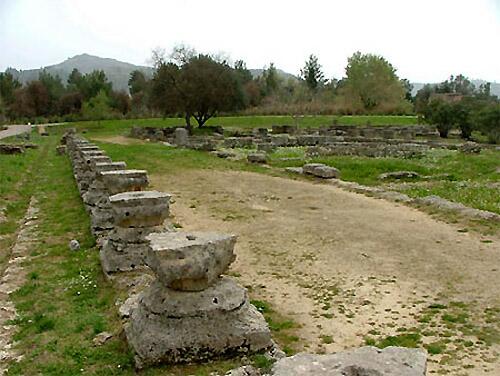
This two-floor building, dedicated to Zeus,
was used to accommodate
the dignitaries during the Olympic Games.
It was built in 330 BC thanks to a donation from the Naxian architect
Leonidas.
A colonnade with 138 Ionic capitals stood all around it, and the
room in the interior looked out onto a courtyard with 44 pillars
with Dorian capitals.
In Roman years it became a guest-house for Empire functionaries.
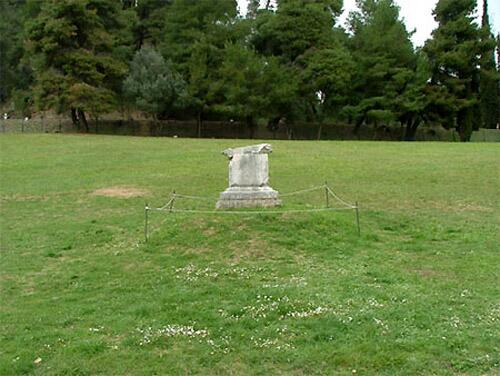
This altar, built in 155 BC is located on the north side of the
Stadium, right opposite the Judges’ Tribune.
In Ancient Greece, the only woman allowed to watch the Games was
the priestess of the goddess Demeter.
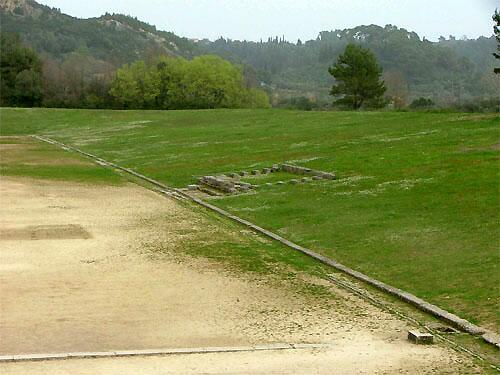
Built of local stone, the Judges Tribune was located at the south of the Stadium.
The Judges (Hellanodikes) made sure the rules were kept and awarded
the prizes.
Their number varied.
At first they were two, then nine and twelve, but after 348 BC
and up to the last Olympiad they numbered ten.